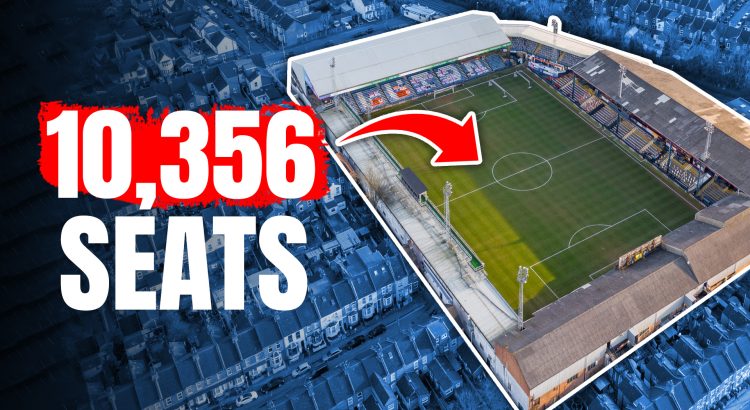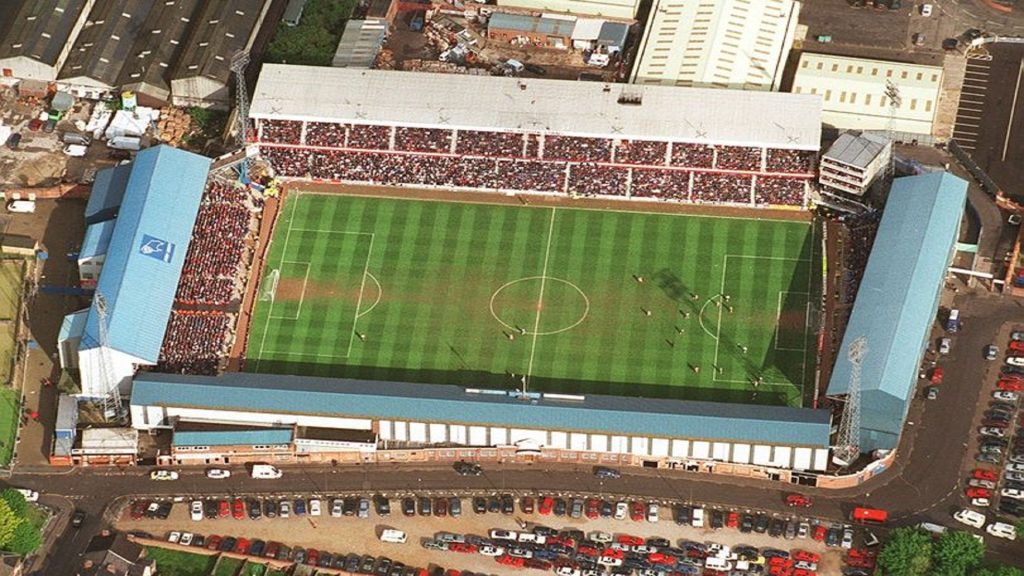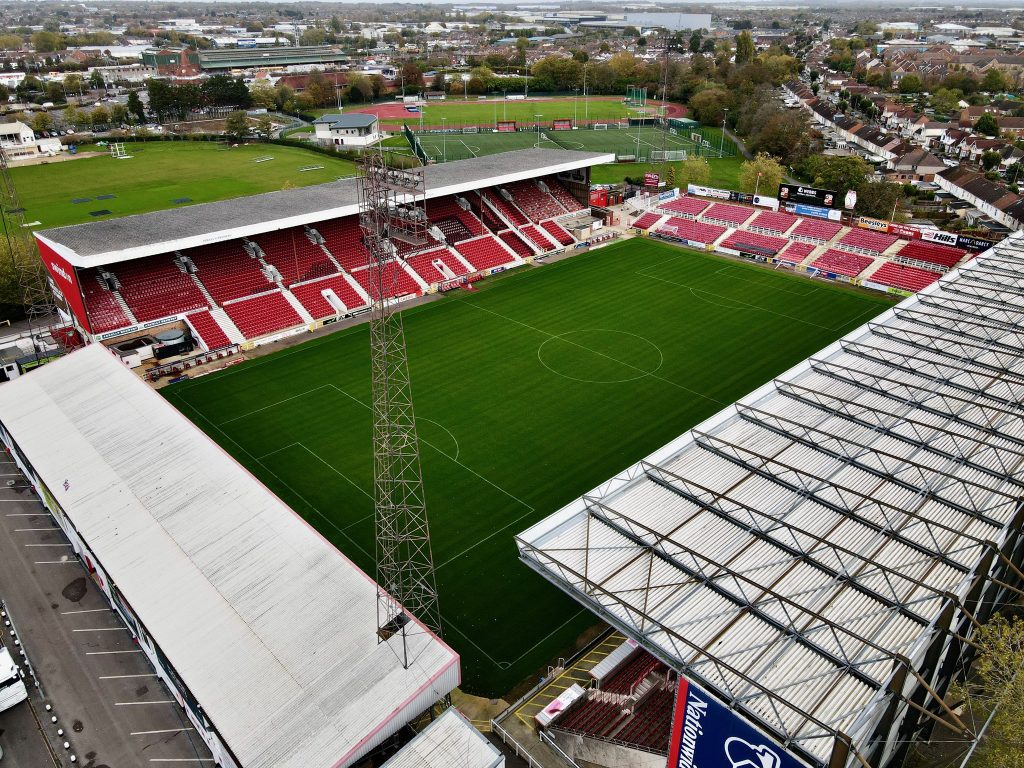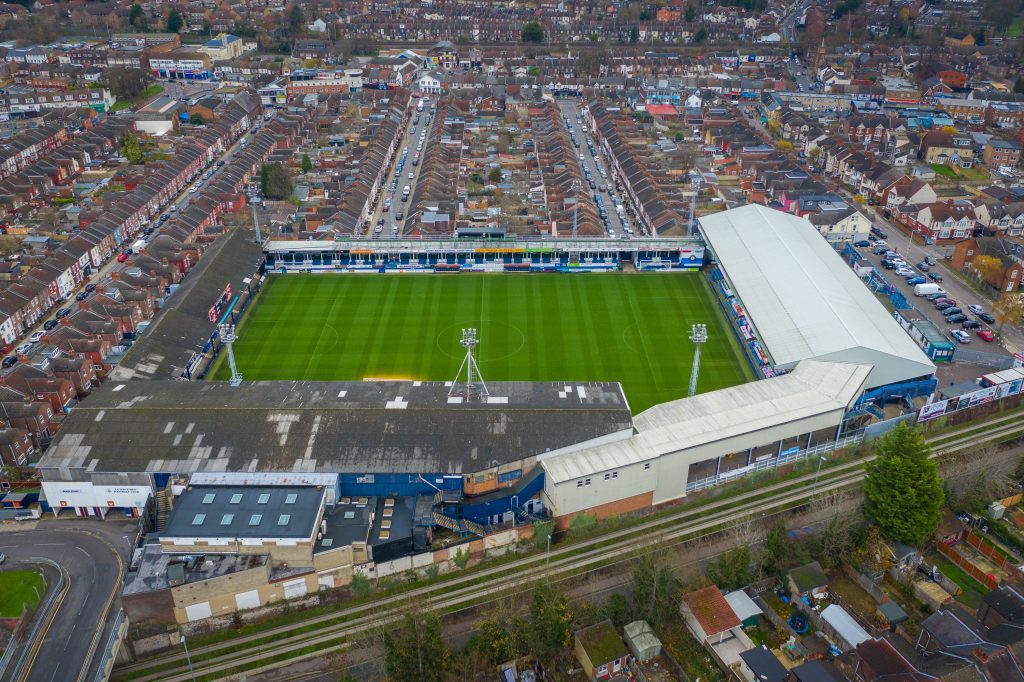Since its inception in 1992, the Premier League has witnessed the rise and fall of numerous football stadiums.
While some grounds boast vast capacities and towering stands, others have left their mark in history as the smallest venues to have hosted Premier League matches.
Let’s take a closer look at the 10 smallest stadiums in Premier League history.
Swansea.com Stadium
The Swansea.com Stadium (formerly Liberty Stadium), home to Swansea City Football Club, is one of the smallest stadiums in Premier League history. With a capacity of around 20,937, it ranks as the 10th smallest Premier League stadium ever.
Constructed in 2005, it replaced Swansea’s previous home, the Vetch Field, where the club had played for over nine decades.
The stadium’s design is fairly conservative but still impressive. It is fully enclosed, with all four stands two-tiered. The West Stand, slightly taller, houses corporate hospitality boxes. Unique features include transparent roofing in the South End, allowing natural light to filter in, and large video screens in the corners.
In 2011, the stadium became the first Premier League ground in Wales. It is the third largest stadium in Wales.
Loftus Road
Loftus Road Stadium, located in London, is the home ground of Queens Park Rangers. Fulham shared it from 2002 to 2004.
It holds the distinction of being the ninth smallest stadium in Premier League history. It also was the first British stadium to install and artificial pitch in 1981. This was removed in 1988. Loftus Stadium has a capacity of 18,439 and was built in 1904.
The ground has a compact feel as it is completely enclosed, with all four stands roughly the same height and their roofs meeting at the corners without any gaps. The South Africa Road Stand boasts a larger upper tier compared to the lower tier, featuring a row of executive boxes. This stand has a couple of supporting pillars. On the opposite side, the Ellerslie Road Stand is a single-tier structure with a television gantry suspended below its roof.
Both ends of the stadium consist of similar-looking two-tiered stands.
Baseball Ground
The Baseball Ground, situated in Derby, served as the home stadium for Derby County Football Club from 1895 to 1997. It is regarded as the eighth smallest stadium in Premier League history with a capacity for 18,300 fans.
The ground was originally established by Sir Francis Ley as a sports facility for the employees of his Vulcan Works foundry. Its name derived from Ley’s introduction of baseball to the area.
Over the years, the Baseball Ground underwent various developments to accommodate the growing fan base. However, the stadium faced challenges in meeting modern requirements, such as seating regulations and limited space. In 1997, Derby County relocated to the newly constructed Pride Park Stadium, bidding farewell to the historic Baseball Ground. Finally, it was demolished in 2004.
Despite its small size, the ground left a lasting impact on the club’s history and the memories of supporters who witnessed Derby County’s triumphs within its unique confines.
Brentford Community Stadium
Brentford Community Stadium, the home ground of Brentford Football Club, holds the distinction of being the 7th smallest stadium in Premier League history, with a capacity of 17,250 spectators.
Located in Brentford, West London, the stadium was completed in 2020 and serves as a versatile venue for both football and rugby matches.
The stadium offers an intimate and engaging match day experience, with fans in close proximity to the pitch. The compact nature of the stadium ensures a lively atmosphere and excellent sight lines from every seat, allowing supporters to fully immerse themselves in the action.
Bloomfield Road
Bloomfield Road, the historic home stadium of Blackpool Football Club, holds a unique distinction as the sixth smallest stadium in Premier League history with a capacity for 16,220 spectators. It accommodated Premier League football during Blackpool’s 2010-11 season.
Located in Blackpool, Lancashire, this iconic ground has been a cherished venue for football enthusiasts since 1901. While it may not boast the same seating capacity as larger arenas, Bloomfield Road has a rich legacy and an intimate atmosphere that captivates fans.
With its three permanent stands, namely the Stan Mortensen North Stand, Jimmy Armfield South Stand, and Sir Stanley Matthews West Stand, the stadium exudes a sense of tradition and nostalgia. Each stand is adorned with white seats spelling out significant names and club symbols,
adding to its distinct charm. Despite its smaller size, Bloomfield Road has witnessed remarkable moments in football history.
The Dell
The Dell was the home stadium of Southampton Football Club from 1898 until 2001. Located in Southampton, it is known for being the fifth smallest stadium in Premier League history. The Dell had a seating capacity of approximately 15,200 fans.
It had a unique and intimate atmosphere due to its compact size, with the stands situated close to the pitch. This proximity between players and spectators created an intense and vibrant match day experience. In 1950, the Dell became the first ground in England to have permanent floodlighting installed.
The Dell witnessed many memorable moments in Southampton’s history. It saw the team compete in the top flight of English football and hosted numerous exciting encounters. Huge crowds packed into the Dell and the attendance record was broken in 1969 when 31,044 watched Southampton play against Manchester United.
The stadium became known for its passionate supporters and the fervent support they provided to their beloved club. However, due to increasing demands for larger and more modern stadiums, Southampton moved to St Mary’s Stadium in 2001, bidding farewell to The Dell.
County Ground
The County Ground is the home stadium of Swindon Town Football Club. It has a capacity of 14,700, making it the fourth smallest stadium in Premier League history after Swindon’s only appearance in the top tier in 1993.
The ground has been the club’s home since 1896 and has undergone various renovations over the years. The record attendance is 32,000 in 1972 against Arsenal.
The stadium features several stands, including the Arkell’s – John Trollope stand on the north side, the Stratton Bank stand on the east end, the Don Rogers stand on the south side, and the Alan McLoughlin Town End on the west end. Each stand offers different seating capacities and amenities.
Boundary Park
Boundary Park is the home stadium of Oldham Athletic Football Club, located in Oldham in Greater Manchester.
The club was one of the founding teams of the Premier League. This made the stadium, which has a capacity of 13,512 fans, the third smallest stadium in Premier League history. The stadium has a rich history, having been opened in 1896.
Over the years, Boundary Park has undergone various changes and renovations. It became an all-seater venue during the 1994-95 season, following Oldham Athletic’s relegation from the top flight of English football. In its early days, the stadium could accommodate nearly 50,000 spectators.
The stadium is anecdotally referred to as the coldest ground in the Football League, earning the nickname “Ice Station Zebra.” It is also situated at a height of 155 meters above sea level, making it the second-highest stadium of any Premier League or Football League club after the Hawthorns, home of West Bromwich Albion.
Dean Court
Dean Court, currently known as the Vitality Stadium due to sponsorship, is the home stadium of AFC Bournemouth. Located in Bournemouth, Dorset it is the second smallest stadium in Premier League history, with a capacity of 11,364 spectators.
Originally opened in 1910, the stadium has undergone several developments and reconstructions over the years. In 2001, it was completely rebuilt with the pitch rotated ninety degrees and moved away from neighboring housing. Since then, further changes have been made, including the addition of seats at the undeveloped south end and the construction of a 2,400-seat stand in 2013, named after former club striker Ted MacDougall.
Dean Court has witnessed the rise of AFC Bournemouth through the English football leagues in recent years.
Kenilworth Road
Kenilworth Road, located in Luton, England, is the historic home stadium of Luton Town Football Club since 1905.
After Luton’s promotion to the Premier League in 2023, Kenilworth Road gained significant attention as it will become the smallest stadium in the league’s history, with a capacity of only 10,356 spectators.
Despite its limited size, the stadium holds a special place in the hearts of Luton Town fans, who have supported their team through thick and thin. The small capacity presents both challenges and advantages for Luton in the Premier League. On one hand, the intimate atmosphere created by the close proximity of the stands can generate a passionate and electric ambiance. On the other hand, accommodating the increased demand for tickets and managing the logistics associated with Premier League fixtures pose a significant challenge for the club.
The ground is made up of five stands. What is unique in this stadium, is the away fans stand, the Oak Road End, which entrance is built into a row of houses.













